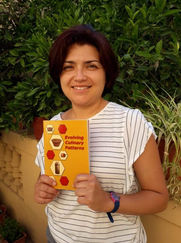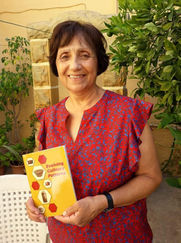
Evolving Culinary Patterns
As shown in the previous pages, during December, Maltese and Austrian students discussed different styles in ingredients and recipes used during everyday cooking. This was further reinforced during the mobility week in Graz. School culinary workshops were held with the participation of all students involved in this exchange visit.
These two photos are showing Maltese students leading a workshop, and showing the Austrian students how to prepare the almond cookies, better known as Biskuttini tal-Lewz. The Maltese students had practiced this recipe during a special workshop held by Nicole Kenely and Michael Bianco. Follow here for further information.


In January, Maltese students researched in depth the history of cooking on the Maltese Islands. All this, together with typical Austrian and Maltese recipes, was compiled in a book as follows.
The book is divided into four sections. The first part of the book narrates how some of the most common ingredients in the Maltese kitchen have found their place in the local diet and how they may have evolved from other countries through rule or invasion. The second section covers the history of Malta’s probably most sophisticated kitchen, dating back to the time of the Knights of St John. This is the kitchen at the Inquisitor’s Palace, situated in Birgu. It includes information about the elaborate kitchen tools used and how cooking developed into what it is today. The last two parts of the book focus on fifteen traditional Maltese and Austrian recipes. All recipes have been researched and prepared by the students. Material for the first two sections, including photographs, was obtained through onsite workshops carried earlier on in the year. For each recipe included in the last two sections, information on its history, health benefits of various ingredients and healthier alternatives, have been included. Again original photographs were made use of. We have also included QR codes to allow inquisitive readers to enjoy some extra information. The book was created using Adobe InDesign which students had been taught to use. In some instances original drawings using digital inking and tablets were used. Other images were hand drawn by Alishia Stone and Megan Abdilla.

Images drawn using digital ink by Liliana Francalanza




The book was printed and then disseminated during the stay of the Austrians in Malta, during a special activity held at Heritage Malta Site (St.Paul's Catacombs) in Rabat. It was also disseminated in various libraries such as the school and local council ones. It was also given to different Home Economics Teachers. The book was sponsored by Heritage Malta and by the Head of School.
To view and read the eBook, please click on the right hand side image.


Other Students working
on the book
Dissemination of the Book
Further dissemination will be taking place in October, since it had to be temporarily stopped due to COVID-19















